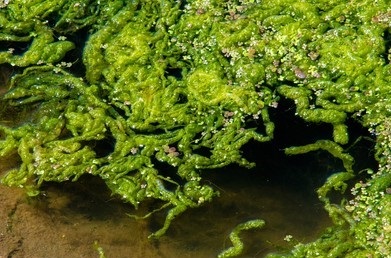Algal blooms in water can lead to the metabolic secretion of algal toxins, the production of odoriferous substances, and the increase of algal organic matter.

For the detection of algae in water Lifeasible provides a variety of solutions. Compared with traditional water quality monitoring, the results of algae testing can be a comprehensive and accurate evaluation of the potential impact of water pollution on water quality and human health.
The parameters measured by Lifeasible in the calculation of specific absorption coefficients mainly include the absorption coefficient of planktonic algae, chlorophyll-a concentration, and demagnetized chlorophyll-a concentration. The specific absorption coefficient is one of the important bio-optical parameters in the water ecosystem, which connects biomass and optical quantities in the water system and is indispensable in the process of biomass estimation, primary productivity estimation, and global carbon cycle study of the water ecosystem
Po is an important component of phosphorus in aquatic plants and algae, and Lifeasible analyzes the total amount of Po in algae using NaOH-EDTA extraction combined with the 31P-NMR (liquid phase 31P nuclear magnetic resonance) method.
Lifeasible can perform algae population density determination using the cell counting method, which is a commonly used microbial counting method. The actual condition of the water body contaminated with algae can then be reflected by the objective data and the results are more accurate.
The Coulter method can avoid measurement errors due to irregularities in cell geometry and has significant advantages for measuring the particle size of planktonic algae. Lifeasible uses this method to easily and quickly measure the particle size distribution and cell number of planktonic algae.
Algae are composed of cells, which are generally living plants with certain chromophores or pigmented bodies and cell walls (except for naked algae). Lifeasible first distinguishes algae from other impurities and animals, and then determine which phylum algae belong to by the characteristics of algae phylum about algal shape and cell structure, cytochrome, and other characteristics, and finally identify the species by the characteristics of phylum about algal shape and cell pigment, inclusions, structure, and other characteristics.
With the increase of environmental pollution and eutrophication of water bodies, harmful algal blooms, especially cyanobacterial blooms, occur frequently in water bodies. Therefore, Lifeasible has established a set of economical, convenient, fast, and accurate algal toxin analysis and detection methods, which can realize long-term, continuous, online, and tracking monitoring of algal toxins in the water.
Lifeasible provides algae testing services, which are intuitive, objective, comprehensive, and historically traceable, and the test results can reflect the quality of the water environment and the health level of the water ecosystem itself comprehensively and accurately, and can also evaluate the toxicity of water pollution and its potential impact on water quality and human health. You can contact our staff at any time to learn more about the diverse algae testing solutions we offer.
Lifeasible has established a one-stop service platform for plants. In addition to obtaining customized solutions for plant genetic engineering, customers can also conduct follow-up analysis and research on plants through our analysis platform. The analytical services we provide include but are not limited to the following:
Get Latest Lifeasible News and Updates Directly to Your Inbox
Adaptive Evolutionary Mechanism of Plants
February 28, 2025
Unraveling Cotton Development: Insights from Multi-Omics Studies
February 27, 2025